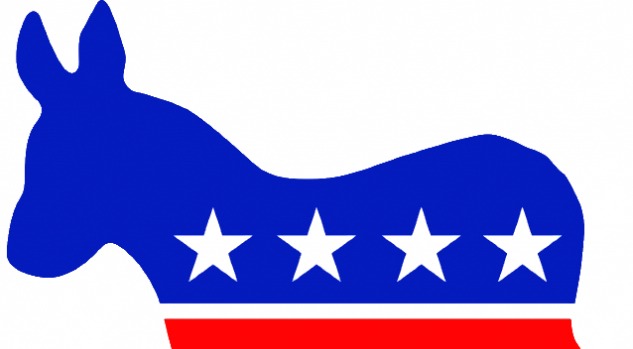It’s not that difficult to figure out who’s going to be the Democratic nominee

Who’s winning the Democratic 2020 primary race? Who’s ahead? Who’s in trouble? Who’s got momentum? Most importantly, who’s the frontrunner? I’m going to make it all simple for you: the “frontrunner” is defined as whoever leads the national polling averages at any given time. Not by who is ahead in one outlier poll. Not by who wins Iowa or New Hampshire. Not by who has the biggest rallies. Not by who all your friends are voting for. National polling averages. Don’t believe me?
In the past forty years, we’ve only had one instance where the Democratic and Republican nominees have both won Iowa and New Hampshire (2004). The media only pretends those two states pick the nominee because it makes for a ratings-friendly narrative.
Not only that, the media loves to take the most absurd early-state poll result it can find and report it for shock value, while ignoring the other ten polls that all show the opposite. You have to look at the polling averages only. If you get your polls from TV, you’ll always be surprised by what ends up happening. Imagine if ESPN only reported how many field goals each football team scored, but didn’t report the overall score, and just let viewers mistakenly assume that the team with the most field goals won the game. That’s pretty much how the TV pundits report on the primary races.
Rally crowd size has NEVER been an indicator of voter turnout. If so we’d have had President Eugene Debs in 1912, President Wendell Wilkie in 1940, and so on. The enthusiasm of your very biggest supporters does NOT correlate to the total number of supporters you have.
Some of you are pulling your hair out trying to figure out how I’m wrong, so you don’t have to accept that the media is jerking you around by pretending these first two states matter. That’s fine. But in such case you’ll always be surprised at who ends up being the nominee.
I’ll put it another way. Bernie Sanders or Pete Buttigieg won Iowa. Bernie or Pete will win New Hampshire. One or both of them will then get labeled the “frontrunner.” But let’s say that Joe Biden then goes on to win Nevada and South Carolina (he’s favored in both). Suddenly Biden has won half of the first four states, and the media is talking about Biden’s “miracle” comeback, when he was in first place in the national polls the entire time! Remember when Bill Clinton was the “comeback kid” in 1992? He wasn’t behind to begin with.
Super Tuesday determines everything. If one candidate dominates Super Tuesday in clear fashion, they’ll end up being the nominee. By that time we’ll have seen every voting demographic weigh in, and the results will be an accurate sampling of the remaining states. If two candidates dominate about equally on Super Tuesday, the two of them will then face a long primary battle where they try to eke out the nomination.
There’s little evidence that winning Iowa or New Hampshire gives a candidate a Super Tuesday boost. In this instance “momentum” is a myth. Everyone is always shocked at how Super Tuesday goes, even though the national polling averages at that point nearly always nail it. South Carolina does serve as a fairly strong indicator of how Super Tuesday will go. Not due to “momentum” (that’s not a real thing this early on) but because the racial demographics of South Carolina match up well with the overall Super Tuesday populace.
Trump finished in nearly third in Iowa in 2016. Everyone said he was toast. Then he dominated South Carolina, and sure enough, he cleaned up on Super Tuesday and never looked back. Throughout all this, the national polling averages revealed Trump was the Republican frontrunner all along. In 2016, Hillary nearly lost Iowa, lost New Hampshire badly. They said she was toast. Then she dominated South Carolina, dominated Super Tuesday, won nomination by four million votes. Throughout all this, the national polling averages revealed Hillary was the Democratic frontrunner all along. The only way you were surprised by either of these outcomes is if you allowed the media to steer your attention away from the national polling averages, in favor of localized red herrings.
“But the polls were wrong in the 2016 general election!” No they weren’t. After Comey’s surprise last minute letter, Hillary’s dominant poll numbers fell off badly in those final eleven days. The final polls were correct within the stated margin of error. But you never hear any pundit acknowledge that the final post-Comey polling averages in 2016 were correct. That fact is inconvenient to the prevailing media narrative that the polls were simply way off, and that Trump won because Hillary was firing blanks the whole time.
The political coverage you’re watching on your TV is infotainment. The media’s prevailing narratives are crafted to keep you tuned in. It’s not fake, but the truth is often stretched. If you really want to get your election coverage from MSNBC and CNN because you like the entertaining format, you’ll have to spend all day fact checking it yourself. Otherwise you’re going to be almost constantly surprised at what ends up happening.
To recap: The national polling averages tell us who the Democratic primary frontrunner is, not Iowa and New Hampshire. Early state “momentum” doesn’t really exist; the first four states each come down to demographics, not momentum. Polls can and do change, but the final polling averages are usually proven correct. Everything else is just noise.
